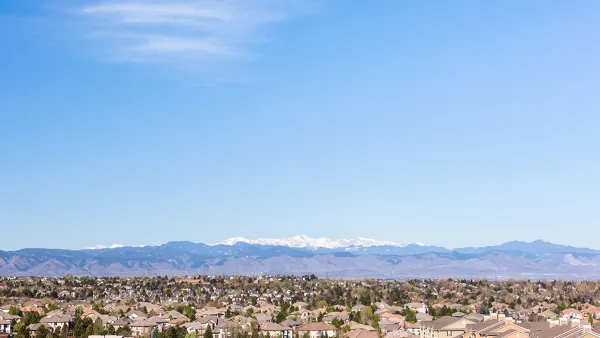No drastic changes will occur in American suburbs over the next quarter century, Columbia University professor contends.
In a paper prepared for the Robert A. Catlin Memorial lecture at the Edward J. Bloustein School of Planning and Public Policy at Rutgers University in New Jersey, Professor Herbert J. Gans observed that the future of the suburbs is linked to the state of the economy; changes in the family, households, and related social institutions; the energy situation; and the spread of global warming. Nonetheless, he said, "the American Dream will remain focussed on the single family house and . . . people will continue to make sacrifices in the hope of spending a large part of their lives in one."
"Once the recession is over, and assuming it has not grown into a full scale depression," Gans said, "I imagine that the customary patterns will resume. As young families grow in size and income, many will again become home owners and move to lower density settlements. And many of them will wind up in new subdivisions built on cheap land beyond the last previous zone of such construction."
"Since few people live by economic rationality alone, more expensive gasoline will not produce a desire to live in the city or to move to a higher density suburban home even when it makes economic sense. I assume that, instead, daily commuters will buy smaller cars, perhaps in the least densely settled parts of the country as well."
Gans anticipated, however, experimentation with "popular and regionally variable new versions of New Urbanist planning all over the country." Still, he said, "the neo Greenwich villages associated with gentrification or with orthodox New Urbanism will not appeal to the middle class American mainstream."
"Although everyone is against global warming," Gans declared, "at this stage not many people are ready to seriously change their habits and lives, except in an emergency of the kind in which they have no choice."
"The reason is simple; global warming does not have sufficient and personal effect on anyone. Right now the glaciers are melting only on TV, and I am not sure whether people who are too young to think of the welfare of their grandchildren will sacrifice now to save them from 110 degree summers that might arrive when these grandchildren are adults."
FULL STORY: Imagining the Suburban Future

National Parks Layoffs Will Cause Communities to Lose Billions
Thousands of essential park workers were laid off this week, just before the busy spring break season.

Retro-silient?: America’s First “Eco-burb,” The Woodlands Turns 50
A master-planned community north of Houston offers lessons on green infrastructure and resilient design, but falls short of its founder’s lofty affordability and walkability goals.

Delivering for America Plan Will Downgrade Mail Service in at Least 49.5 Percent of Zip Codes
Republican and Democrat lawmakers criticize the plan for its disproportionate negative impact on rural communities.

Test News Post 1
This is a summary

Test News Headline 46
Test for the image on the front page.

Balancing Bombs and Butterflies: How the National Guard Protects a Rare Species
The National Guard at Fort Indiantown Gap uses GIS technology and land management strategies to balance military training with conservation efforts, ensuring the survival of the rare eastern regal fritillary butterfly.
Urban Design for Planners 1: Software Tools
This six-course series explores essential urban design concepts using open source software and equips planners with the tools they need to participate fully in the urban design process.
Planning for Universal Design
Learn the tools for implementing Universal Design in planning regulations.
EMC Planning Group, Inc.
Planetizen
Planetizen
Mpact (formerly Rail~Volution)
Great Falls Development Authority, Inc.
HUDs Office of Policy Development and Research
NYU Wagner Graduate School of Public Service



























